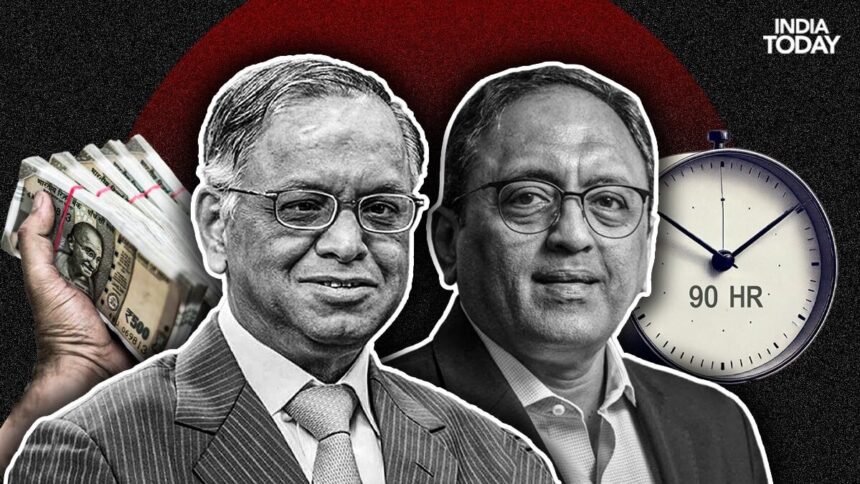Amid the storm stirred by the push for a 70-hour work week by some business leaders in India, a new perspective has emerged. Dr Shamika Ravi, a member of the Prime Minister’s Economic Advisory Council, has released a paper that takes a deep dive into how many Indians actually live there.
Drawing on data from the 2019 Time Use Survey by the Ministry of Statistics and Program Implementation (MOSPI), its analysis, titled Time spent on employment-related activities in India: a note, reveals critical insights into work culture, productivity, and economic disparities.
How much do Indians work?
Indians already spend an average of 422 minutes a day – more than 42 hours a week – on paid work. But this average masks sharp contrasts between regions and demographics:
- Urban workers clocked 469 minutes per day (7.8 hours), surpassing their rural counterparts, who averaged 399 minutes (6.65 hours).
- Government employees work 45 minutes less per day compared to those in private or public companies. Notably, urban government workers spend an hour more per day at work than their rural counterparts.
Work culture across states and sectors
Dr. Ravi’s paper highlights the stark disparities in work hours across states and industries:
- Union territories like Daman & Diu and Dadra & Nagar Haveli report more than 600 minutes of work daily. In contrast, Goa and the northeastern states average less than 360 minutes, with Delhi at 8.3 hours and Goa at just 5.5 hours.
- Workers in the tertiary and secondary sectors record significantly longer hours than those in the primary sector. Yet Goa’s core sector massages this trend with relatively higher working hours.
Gender and social gaps
The study reveals striking differences in work patterns based on gender and social groups:
- Urban women work two hours less per day than men, while rural women trail their male counterparts by 1.8 hours.
- Scheduled tribes report fewer work hours than other groups, while other backward classes (OBCs) fall in line with the national average.
Working hours and economic growth
Dr Ravi’s analysis highlights the link between working hours and economic productivity. A 1% increase in working time is linked to a 1.7% increase in net state domestic product per capita (NSDP). For larger states, this impact is even stronger – a 3.7% increase in NSDP for every 1% increase in work hours.
The reality of 70 hour work weeks
Currently, Gujarat has the highest proportion of its population – 7.21% – working more than 70 hours a week, compared to just 1.05% in Bihar. These numbers, coupled with significant differences across sectors and demographics, raise important questions about whether a one-time push for longer weeks is practical, or even fair.









